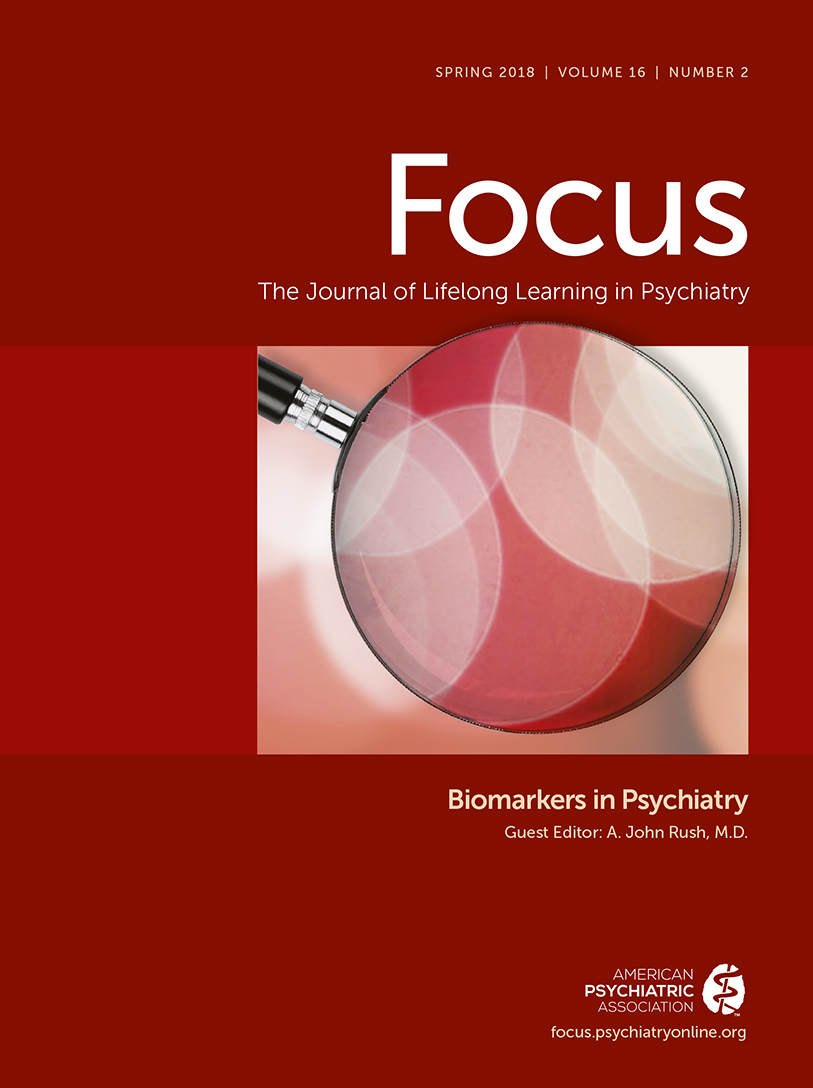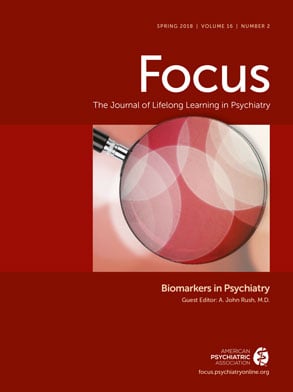Progress and Roadblocks in the Search for Brain-Based Biomarkers of Autism and Attention-Deficit/Hyperactivity Disorder
Uddin LQ, Dajani DR, Voorhies W, et al.
Transl Psychiatry 2017; 7(8):e1218
Children with neurodevelopmental disorders benefit most from early interventions and treatments. The development and validation of brain-based biomarkers to aid in objective diagnosis can facilitate this important clinical aim. The objective of this review is to provide an overview of current progress in the use of neuroimaging to identify brain-based biomarkers for autism spectrum disorder (ASD) and attention-deficit/hyperactivity disorder (ADHD), two prevalent neurodevelopmental disorders. We summarize empirical work that has laid the foundation for using neuroimaging to objectively quantify brain structure and function in ways that are beginning to be used in biomarker development, noting limitations of the data currently available. The most successful machine learning methods that have been developed and applied to date are discussed. Overall, there is increasing evidence that specific features (for example, functional connectivity, gray matter volume) of brain regions comprising the salience and default mode networks can be used to discriminate ASD from typical development. Brain regions contributing to successful discrimination of ADHD from typical development appear to be more widespread, however there is initial evidence that features derived from frontal and cerebellar regions are most informative for classification. The identification of brain-based biomarkers for ASD and ADHD could potentially assist in objective diagnosis, monitoring of treatment response and prediction of outcomes for children with these neurodevelopmental disorders. At present, however, the field has yet to identify reliable and reproducible biomarkers for these disorders, and must address issues related to clinical heterogeneity, methodological standardization and cross-site validation before further progress can be achieved.
Genetic Approaches for the Study of PTSD: Advances and Challenges
Banerjee SB, Morrison FG, Ressler KJ
Neurosci Lett 2017; 649:139–146
Posttraumatic stress disorder (PTSD) is a highly debilitating stress and anxiety-related disorder that occurs in response to specific trauma or abuse. Genetic risk factors may account for up to 30%−40% of the heritability of PTSD. Understanding the gene pathways that are associated with PTSD, and how those genes interact with the fear and stress circuitry to mediate risk and resilience for PTSD will enable the development of targeted therapies to prevent the occurrence of or decrease the severity of this complex multigene disorder. This review will summarize recent research on genetic approaches to understanding PTSD risk and resilience in human populations, including candidate genes and their epigenetic modifications, genome-wide association studies and neural imaging genetics approaches. Despite challenges faced within this field of study such as inconsistent results and replications, genetic approaches still offer exciting opportunities for the identification and development of novel therapeutic targets and therapies in the future.
Imaging and Fluid Biomarkers in Frontotemporal Dementia
Meeter LH, Kaat LD, Rohrer JD, et al.
Nat Rev Neurol 2017 Jul;13(7):406–419
Frontotemporal dementia (FTD), the second most common type of presenile dementia, is a heterogeneous neurodegenerative disease characterized by progressive behavioral and/or language problems, and includes a range of clinical, genetic and pathological subtypes. The diagnostic process is hampered by this heterogeneity, and correct diagnosis is becoming increasingly important to enable future clinical trials of disease-modifying treatments. Reliable biomarkers will enable us to better discriminate between FTD and other forms of dementia and to predict disease progression in the clinical setting. Given that different underlying pathologies probably require specific pharmacological interventions, robust biomarkers are essential for the selection of patients with specific FTD subtypes. This Review emphasizes the increasing availability and potential applications of structural and functional imaging biomarkers, and cerebrospinal fluid and blood fluid biomarkers in sporadic and genetic FTD. The relevance of new MRI modalities - such as voxel-based morphometry, diffusion tensor imaging and arterial spin labeling - in the early stages of FTD is discussed, together with the ability of these modalities to classify FTD subtypes. We highlight promising new fluid biomarkers for staging and monitoring of FTD, and underline the importance of large, multicentre studies of individuals with presymptomatic FTD. Harmonization in the collection and analysis of data across different centers is crucial for the implementation of new biomarkers in clinical practice, and will become a great challenge in the next few years.
Eye Tracking Reveals Abnormal Visual Preference for Geometric Images as an Early Biomarker of an Autism Spectrum Disorder Subtype Associated With Increased Symptom Severity
Pierce K, Marinero S, Hazin R, et al.
Biol Psychiatry 2016; 79(8):657–666
BACKGROUND: Clinically and biologically, autism spectrum disorder (ASD) is heterogeneous. Unusual patterns of visual preference as indexed by eye tracking are hallmarks; however, whether they can be used to define an early biomarker of ASD as a whole or leveraged to define a subtype is unclear. To begin to examine this issue, large cohorts are required.
METHODS: A sample of 334 toddlers from six distinct groups (115 toddlers with ASD, 20 toddlers with ASD features, 57 toddlers with developmental delay, 53 toddlers with other conditions [e.g., premature birth, prenatal drug exposure], 64 toddlers with typical development, and 25 unaffected toddlers with siblings with ASD) was studied. Toddlers watched a movie containing geometric and social images. Fixation duration and number of saccades within each area of interest and validation statistics for this independent sample were computed. Next, to maximize power, data from our previous study (N=110) were added for a total of 444 subjects. A subset of toddlers repeated the eye-tracking procedure.
RESULTS: As in the original study, a subset of toddlers with ASD fixated on geometric images>69% of the time. Using this cutoff, sensitivity for ASD was 21%, specificity was 98%, and positive predictive value was 86%. Toddlers with ASD who strongly preferred geometric images had 1) worse cognitive, language, and social skills relative to toddlers with ASD who strongly preferred social images and 2) fewer saccades when viewing geometric images. Unaffected siblings of ASD probands did not show evidence of heightened preference for geometric images. Test-retest reliability was good. Examination of age effects suggested that this test may not be appropriate with children>4 years old.
CONCLUSIONS: Enhanced visual preference for geometric repetition may be an early developmental biomarker of an ASD subtype with more severe symptoms.
Copyright © 2016 Society of Biological Psychiatry. Published by Elsevier Inc. All rights reserved.
Biological Markers for Anxiety Disorders, OCD and PTSD—A Consensus Statement. Part I: Neuroimaging and Genetics
Bandelow B, Baldwin D, Abelli M, et al.
World J Biol Psychiatry 2016; 17(5):321–365
OBJECTIVES: Biomarkers are defined as anatomical, biochemical or physiological traits that are specific to certain disorders or syndromes. The objective of this paper is to summarize the current knowledge of biomarkers for anxiety disorders, obsessive-compulsive disorder (OCD) and posttraumatic stress disorder (PTSD).
METHODS: Findings in biomarker research were reviewed by a task force of international experts in the field, consisting of members of the World Federation of Societies for Biological Psychiatry Task Force on Biological Markers and of the European College of Neuropsychopharmacology Anxiety Disorders Research Network.
RESULTS: The present article (Part I) summarizes findings on potential biomarkers in neuroimaging studies, including structural brain morphology, functional magnetic resonance imaging and techniques for measuring metabolic changes, including positron emission tomography and others. Furthermore, this review reports on the clinical and molecular genetic findings of family, twin, linkage, association and genome-wide association studies. Part II of the review focuses on neurochemistry, neurophysiology and neurocognition.
CONCLUSIONS: Although at present, none of the putative biomarkers is sufficient and specific as a diagnostic tool, an abundance of high-quality research has accumulated that will improve our understanding of the neurobiological causes of anxiety disorders, OCD and PTSD.
A Meta-Analysis of Blood Cytokine Network Alterations in Psychiatric Patients: Comparisons Between Schizophrenia, Bipolar Disorder and Depression
Goldsmith DR, Rapaport MH, Miller BJ
Mol Psychiatry 2016; 21(12):1696–1709
Schizophrenia, bipolar disorder and major depressive disorder (MDD) have all been associated with aberrant blood cytokine levels; however, neither the pattern of cytokine alterations nor the impact of clinical status have been compared across disorders. We performed a meta-analysis of blood cytokines in acutely and chronically ill patients with these major psychiatric disorders. Articles were identified by searching the PubMed, PsycINFO and Web of Science, and the reference lists of these studies. Sixty-eight studies met the inclusion criteria (40 schizophrenia, 10 bipolar disorder and 18 MDD) for acutely ill patients. Forty-six studies met the inclusion criteria (18 schizophrenia, 16 bipolar disorder and 12 MDD) for chronically ill patients. Levels of two cytokines (interleukin-6 (IL-6), tumor necrosis factor-α (TNF-α)), one soluble cytokine receptor (sIL-2R), and one cytokine receptor antagonist (IL-1RA) were significantly increased in acutely ill patients with schizophrenia, bipolar mania and MDD compared with controls (p<0.01). Following treatment of the acute illness, IL-6 levels significantly decreased in both schizophrenia and MDD (p<0.01); sIL-2R levels increased in schizophrenia; and IL-1RA levels in bipolar mania decreased. In chronically ill patients, the levels of IL-6 were significantly increased in schizophrenia, euthymic (but not depressed) bipolar disorder and MDD compared with controls (p<0.01). The levels of IL-1β and sIL-2R were significantly increased in both chronic schizophrenia and euthymic bipolar disorder. Overall, there were similarities in the pattern of cytokine alterations in schizophrenia, bipolar disorder and MDD during acute and chronic phases of illness, raising the possibility of common underlying pathways for immune dysfunction. Effects of treatment on cytokines were more robust for schizophrenia and MDD, but were more frequently studied than for acute mania. These findings have important implications for our understanding of the pathophysiology and treatment of major psychiatric disorders.

